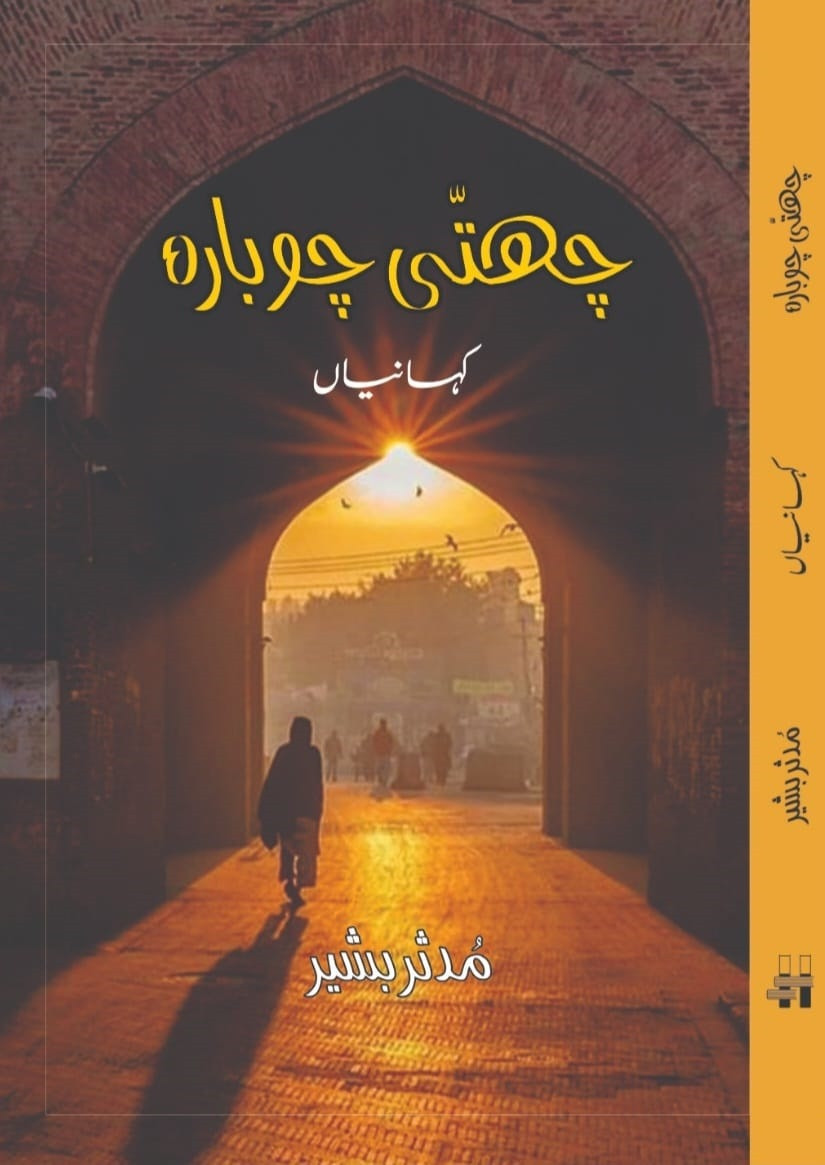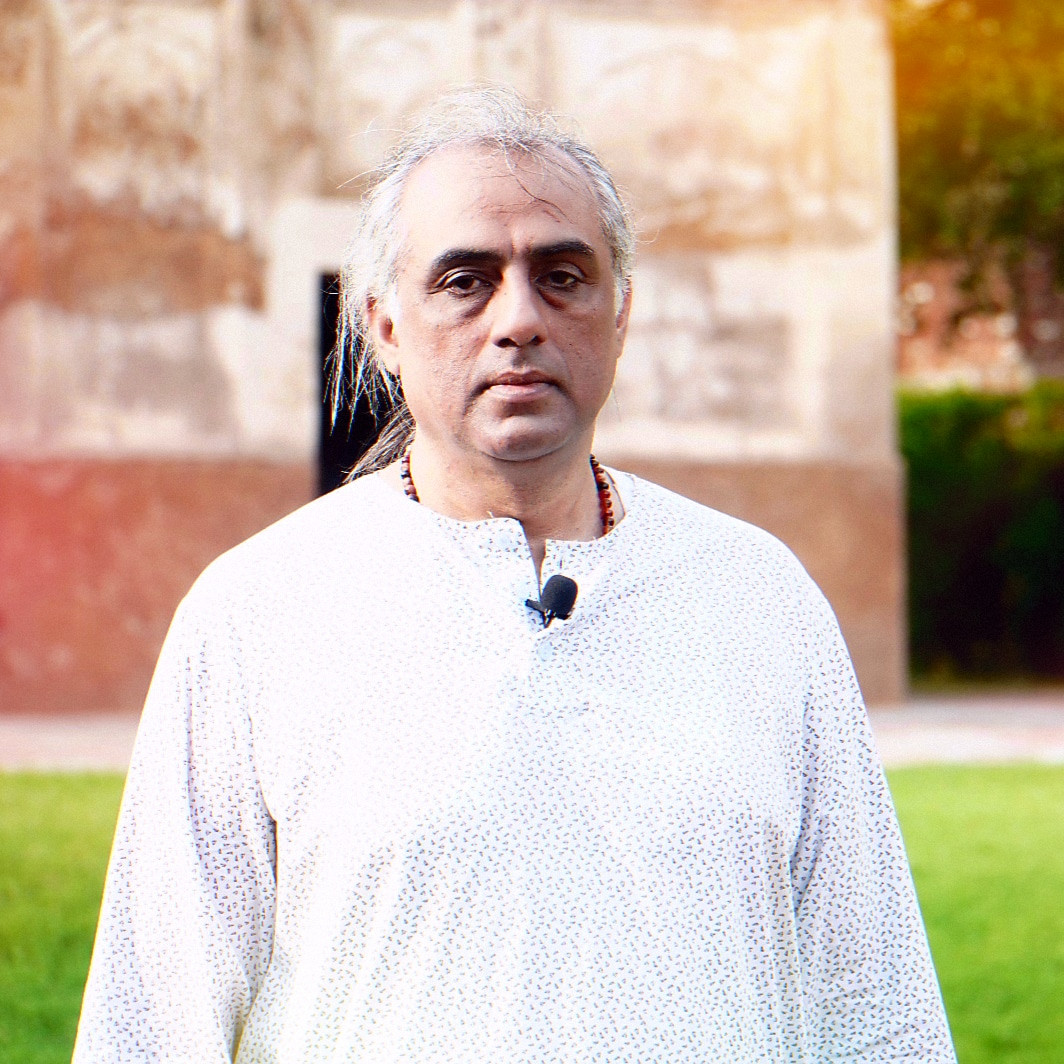Another inspiring venture from the multi-talented Mudassar Bashir is in my hands and I am glad to review it for his unique writing style that effortlessly weaves together everyday language and profound themes, making his stories relatable and impactful. This is what makes his writing a source of literary ecstasy and researched knowledge for readers.
Bashir’s latest collection of 29 Punjabi novelettes/stories called "Chatti Chobara" brims with socio-cultural insights and folk history. His stories are always close to reality and worldly dimensions despite possessing spiritual and mystic interpretations. The characters are set in Lahore.
The thought-provoking novelette "Bandra" offers a profound look at a society caught between change and stagnation. It explores socio-economic relationships in four stages — from individuals confined to monotonous work environments, to intellectual gatherings how these intellectuals engage with the real world beyond their insular circles, and finally, to the dynamics between home and the broader world. The underlying message of the story, if intended, is that meaningful change requires harmony between one's inner and outer worlds, involving, in the process, all segments of the society.
The main story titled "Chatti Chobara", is connected to a particular lane in the walled and culturally and historically rich area of Lahore. It is believed that since ancient times, supernatural entities called "Maiyan Raniyan" reside here. These mystical raniyan are Hindu characters. In this lane, people throw colour, and light incense sticks, and lamps filled with mustard oil. Residents place swings on their rooftops for the Maiyan Raniyan, hoping they will swing on them. The writer creates a mysterious character here and connects it to the surroundings. The character who responds to images in her dream, returns from abroad to her native land, only to find that the images of the dream start to fit together in bits and pieces from reality.

Bibi Rehmat, who used to sew quilts, left a red quilt for the dreamer ten years ago before she passed away. It is a mere coincidence that the dreamer arrives at her daughter’s house, talks about the quilt, and the story takes a mysterious turn. When Rehmat's daughter asks the dreamer her name, she replies, "Rani" and then mysteriously disappears towards Chatti Chobara.
Bashir skillfully develops the story around the mysterious characters of the raniyan in a way that distinguishes Rani, the new character.
The shortest episodes “Aaqa” and “On Duty” shed light on the socio-cultural gaps existing between the first and the third world countries. Moreover, this one-scene dialogue amongst four people encompasses the hypocritical attitudes of our folks who misinterpret religion and faith due to their sheer ignorance or deliberate intentions and wicked desires.
“On Duty” is a resonating slap in the face of our society where the weak are oppressed by inhuman and savage people with power and authority who continue to exploit the law, faith, and religion to sustain their inner evil.
Another inspiring story is titled "Billiyaan Kutte" [Cats and Dogs] sweeps us into a different world of thought and imagination. The main character of this story is imprisoned in India during the 1971 war. His family receives no news of him. Fearing that he is being given ground glass in his food, he throws his curry on the prison wall, where the cats end up eating it. This becomes a routine for him. The guards, considering him a holy man, give him extra food, which also goes to the cats. A few years later, when he returns home, his wife has married his elder brother, and his three sons do not recognise him. His brothers, assuming him dead, have transferred his land to their names. While they reject him, he leaves his family to move to the city where he works hard and saves money to buy a plot, that a fraudster takes away from him.

Disappointed, he goes to a shrine where he faints. When he regains consciousness, a few coins are lying around him. He decides to permanently sit in the corner of a street, feeding cats and dogs with whatever he gets. People think he is a saintly figure.
A writer finds him intriguing, listens to his stories, and observes that people visit him and how the prisoner of war who is now an old man has endless love for cat and dogs on the streets. When suddenly, the man disappears, the writer searches for him and asks people about him, but no one knows his whereabouts.
One day, the writer sees him in a car with a woman in a posh locality and follows her. The woman, who has lost her husband and two sons in a terrorist attack, loves stray cats and dogs. She persuades the old man to live with her along with his cats. Together, they take care of animals, which eases their grief and mitigates the pain inflicted by humans. Here Bashir illustrates how animals connect with distressed humans and friendship with animals alleviates internal unrest in humans, as animals offer unconditional love.
The story may seem simple, but the way it progresses with pauses signifies exceptional control over language and thought.
“Tuhada Keeh Lagda A?” provides an insight in a typical rustic culture with simplicity and curiosity for knowing others and their every-day routine. It also symbolises the ever-increasing distance between the individuals of the present day global village that is rapidly becoming overpopulated. Every individual is surrounded by a crowd and the hustle bustle of fellow human beings, but still languishes haplessly in the wilderness of loneliness and depression.
In "Uncle" we come across a character from the old neighborhoods of Lahore. Uncle respects his neighbours and helps them selflessly. He takes care of people belonging to different generations without any expectations. However, he unexpectedly receives love from those he cared for and the story takes an interesting twist. Keeping the whole story around an ordinary incident and making it special in the last two or three sentences is commendable, a skill only a writer like Bashir possesses.
Although reasonable and comprehensive bulk of intellectual work has been done on the history and architectural treasures of Lahore in several other languages besides Urdu and English, strangely enough, we hardly find books on Lahore or Punjab’s history and culture in Punjabi language. This is even more surprising as Lahore has not just been the capital of Punjab, but the pulsating heart of the entire subcontinent, leading multi-dimensional lingo-cultural and literary accomplishments and festivities in the region. The credit of filling this vacuum, to a reasonable extent, goes to Bashir, a historian, researcher, poet, compere and writer with many international accolades, including the "Dhabaan" International Award from Canada. Mudassar's notable quality is that he uses common, conversational Punjabi words, making it impossible to accuse him of writing in a difficult language. That's why we can easily read his books cover to cover in two or three days.
This captivating volume makes an enchanting read. The preface of "Chatti Chobara" is an added treat, where Bashir compares writers in English, Urdu, and Punjabi, revealing the hypocrisy of our social attitudes and government policies. The book has been published by Fiction House, Lahore.
Muttahir Ahmed Khan is an author, analyst, educationist, can be reached at muttahir_khan@hotmail.com
All facts are information are the sole responsibility of the writer
